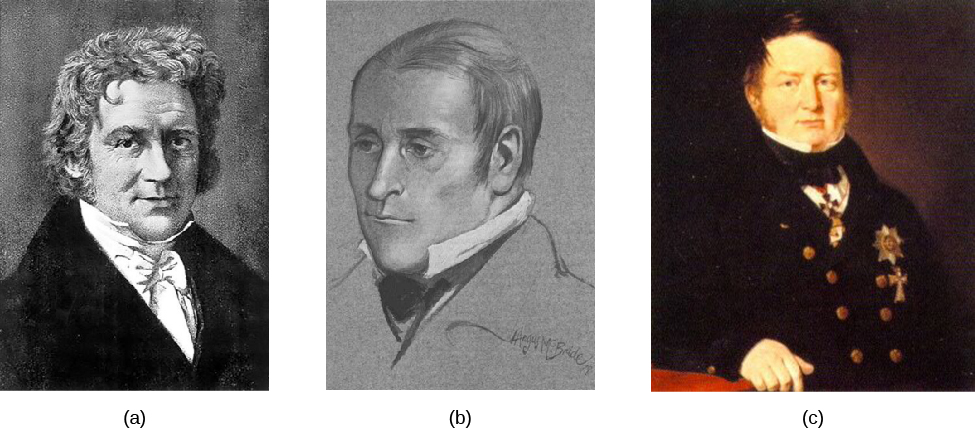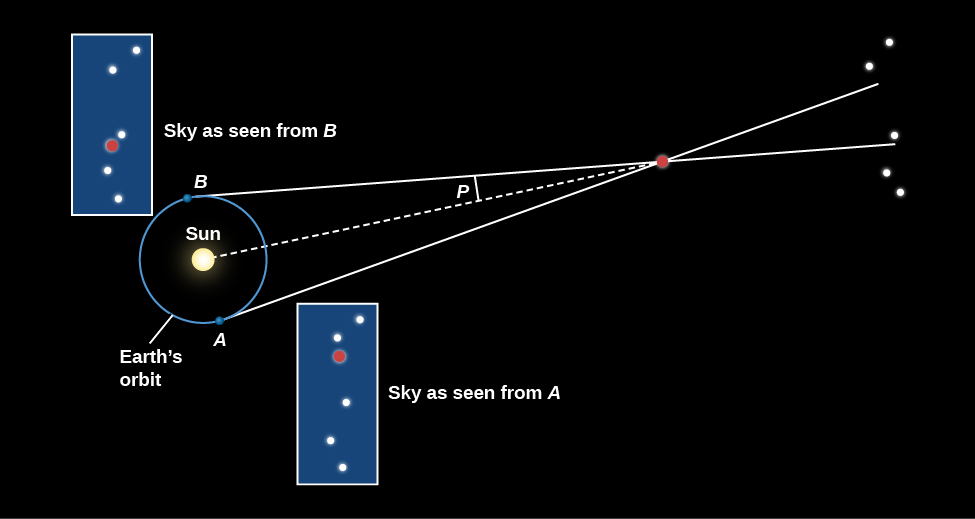| << Chapter < Page | Chapter >> Page > |
This was a significant technical challenge, since, even for the nearest stars, parallax angles are usually only a fraction of a second of arc. Recall that one second of arc (arcsec) is an angle of only 1/3600 of a degree. A coin the size of a US quarter would appear to have a diameter of 1 arcsecond if you were viewing it from a distance of about 5 kilometers (3 miles). Think about how small an angle that is. No wonder it took astronomers a long time before they could measure such tiny shifts.
The first successful detections of stellar parallax were in the year 1838, when Friedrich Bessel in Germany ( [link] ), Thomas Henderson , a Scottish astronomer working at the Cape of Good Hope, and Friedrich Struve in Russia independently measured the parallaxes of the stars 61 Cygni, Alpha Centauri , and Vega , respectively. Even the closest star, Alpha Centauri, showed a total displacement of only about 1.5 arcseconds during the course of a year.

[link] shows how such measurements work. Seen from opposite sides of Earth’s orbit, a nearby star shifts position when compared to a pattern of more distant stars. Astronomers actually define parallax to be one-half the angle that a star shifts when seen from opposite sides of Earth’s orbit (the angle labeled P in [link] ). The reason for this definition is just that they prefer to deal with a baseline of 1 AU instead of 2 AU.

With a baseline of one AU, how far away would a star have to be to have a parallax of 1 arcsecond? The answer turns out to be 206,265 AU, or 3.26 light-years. This is equal to 3.1 × 10 13 kilometers (in other words, 31 trillion kilometers). We give this unit a special name, the parsec (pc)—derived from “the distance at which we have a par allax of one sec ond.” The distance ( D ) of a star in parsecs is just the reciprocal of its parallax ( p ) in arcseconds; that is,
Thus, a star with a parallax of 0.1 arcsecond would be found at a distance of 10 parsecs, and one with a parallax of 0.05 arcsecond would be 20 parsecs away.
Back in the days when most of our distances came from parallax measurements, a parsec was a useful unit of distance, but it is not as intuitive as the light-year. One advantage of the light-year as a unit is that it emphasizes the fact that, as we look out into space, we are also looking back into time. The light that we see from a star 100 light-years away left that star 100 years ago. What we study is not the star as it is now, but rather as it was in the past. The light that reaches our telescopes today from distant galaxies left them before Earth even existed.

Notification Switch
Would you like to follow the 'Astronomy' conversation and receive update notifications?